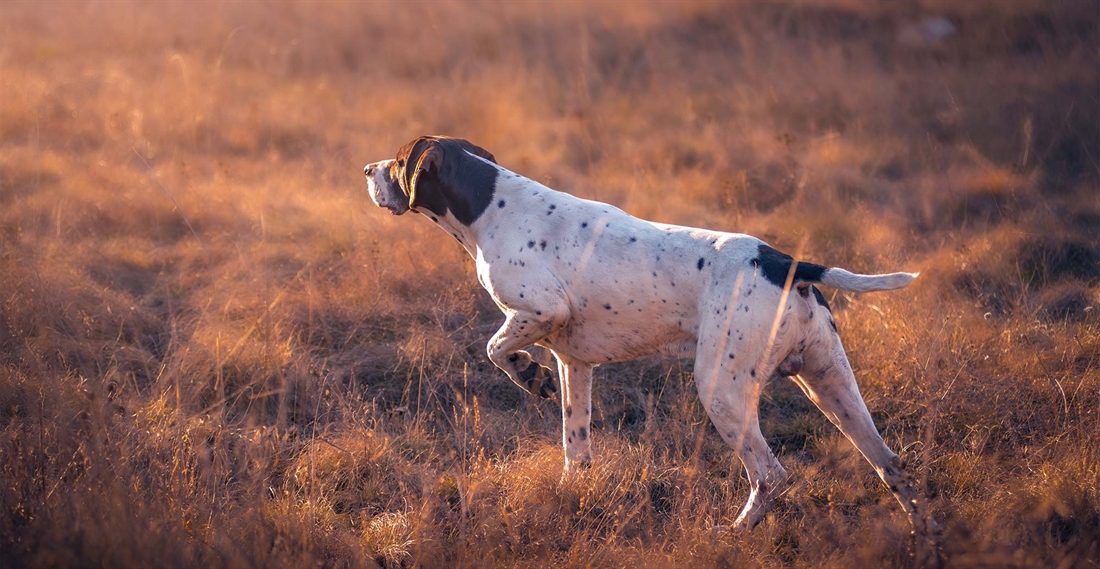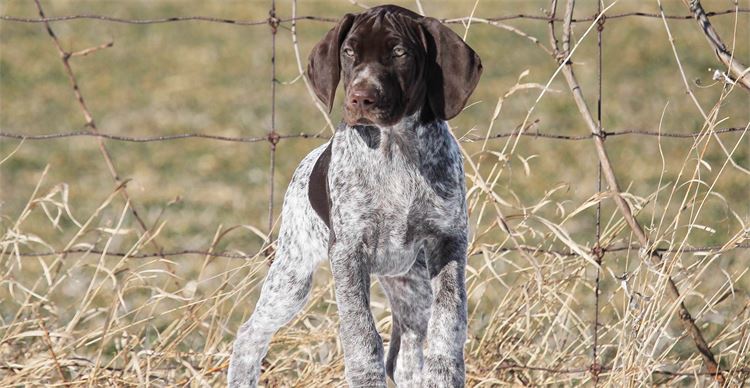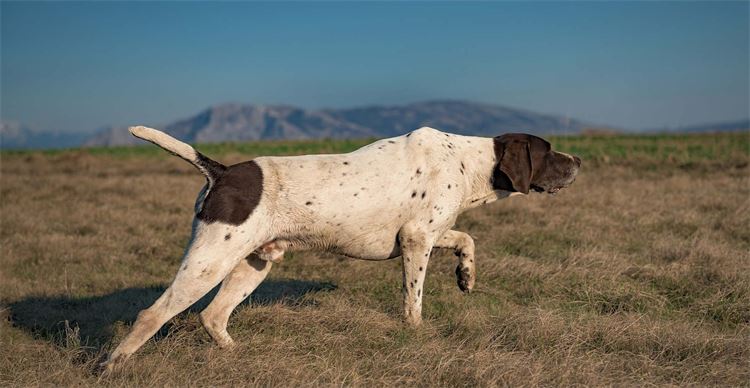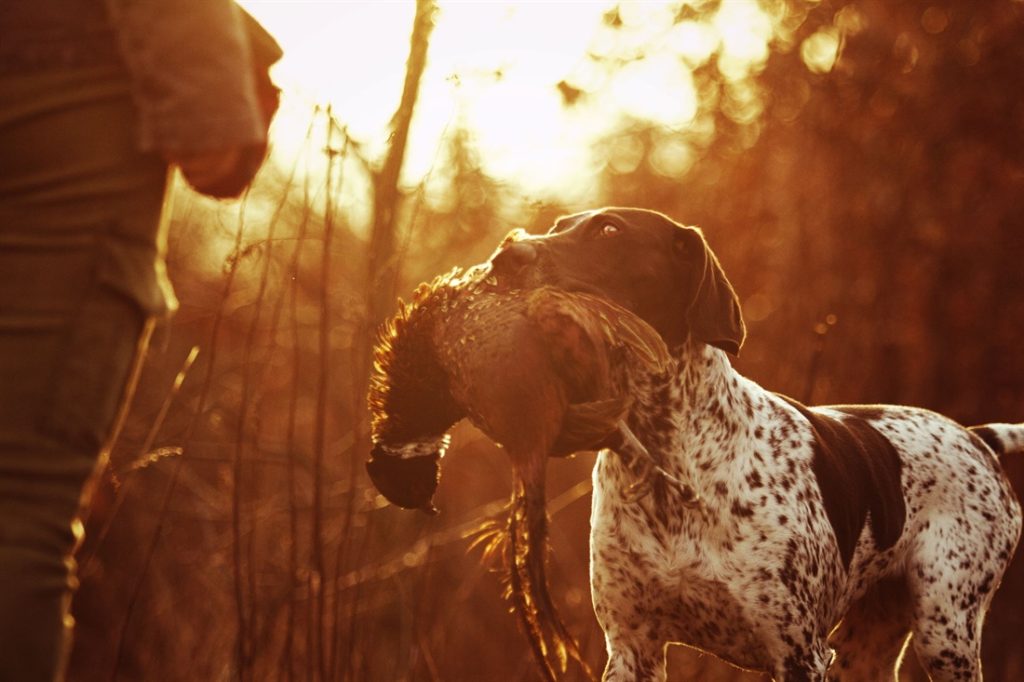German shorthaired pointers
We take a look at one of the most popular HPR breeds, the German shorthaired pointer (GSP).

History:
The earliest examples of German shorthaired pointers (GSPs) date back to the 17th century, but it is in the last 150 years that the breed has evolved into the highly capable, multipurpose hunting dog that it is today.
Ancestors of the breed include Spanish, German and English pointers, and bloodhounds. When cross-bred, the result was a large, hound-like dog with an acute sense of smell that could be used effectively by a hunter on foot in search of all feathered and furred game. On top of that, hunters favoured the GSP for its obedience and elegance.
Understandably, in the late 1800s there was a lot of variation in the breed’s appearance and abilities, so Prince Albrecht zu Solms-Braunfeld of the Royal House of Hanover advised breeders on how to develop the perfect functioning dog, leaving the form to be shaped organically. The result is a high-energy, agile, powerful, and lean dog, with a short, water-resistant coat.
The armed conflicts that occurred throughout the Second World War and the Cold War in Germany understandably had an effect on the GSP gene pool. The breed did however flourish in the States and the UK during this time.
How many are registered in the UK?
The GSP is one of the most popular Hunt Point Retrieve (HPR) breeds in the UK, with 1,769 puppies registered with the Kennel Club in 2018.
Traits and characteristics:
GSPs are renowned for being intelligent, affectionate, playful dogs that are eager to please. They have an impressive sense of smell, love water and require a lot of exercise daily. GSPs make great family companions and are generally non-aggressive. They are also known to bark, which is useful at times for letting their owner know of the presence of others.
GSPs are not the easiest of working breeds to train as they can become bored easily, so fun, rewarding and playful training sessions are recommended.
Today, they are commonly used for flushing and retrieving game, finding lost or wounded deer, and as watchdogs, bomb and drug detection dogs, and therapy dogs.
Conformation:
Typically, GSPs are a large dog with well pronounced features. The head is large, with strong features, a large dark nose and broad, flat ears that hang besides the head. The tail is often docked for working dogs to prevent injury whilst working in rough cover. The coat is short, smooth and dense – one of its most identifiable features. Their colours vary from white to brown, but most commonly the head and ears are black or brown, leading to speckled markings in white, brown and black from shoulders to tail with the odd large patch of colour.
Average age span of a GSP:
Over 10 years.
Health issues:
The breed is known to suffer occasionally from health issues such as hip dysplasia, pannus, entropion, dissecans, hypothyroidism, gastric torsion and Von Willebrand Disease (blood clotting disorder) among others. Whilst more serious health issues like lymphedema, cardiomyopathy, ectropion, and progressive retinal atrophy (PRA) are also of concern.
Regular veterinary tests – such as thyroid, cardiac, hip and eye exams – are recommended to identify any issues.
As for mental wellbeing, GSPs love regular company; long periods alone can often cause the dog to become unhappy, nervous and destructive.
Feeding and nutrition – From the Chudleys’ Nutritionist:
“As a nutritionist, one designs a diet first and foremost to meet all the nutrient requirements to support a long, active and healthy life.
“For working breeds, fundamental nutrient requirements vary very little, if at all. There may be subtle trend differences between the breeds in terms of certain conditions that are more prevalent in one particular breed over another that may be helped by using appropriate functional nutrition.
“The key differences in nutrient requirements for working dogs is the duration and intensity of the work undertaken. The longer the workload the more energy your dog will require, so will therefore need to eat more food, and as a result the dog will get more of all other nutrients it requires, such as protein and vitamins.
“It is important to know where that energy needs to come from. Sprint work requires a diet consisting of more carbohydrate and some fat – a diet of around 22–25% protein and up to 14% fat is preferred – whereas a dog working long days on a moor will rely more on fat and fat reserves – a diet with 24%+ protein and 14%+ fat works best.
“Finally, when it comes to choosing the size of the piece of food, studies have proven that all breeds prefer a kibble of around 14–16mm in diameter.
“So, chose a diet to suit your dog’s workload and type, and one that provides those functional nutritional aspects as well.”
Why do GSPs make good gundogs?
A well-trained GSP can be a versatile working companion. Their game-finding ability makes them perfect for the adventurous sportsman, capable of searching for quarry as small as rabbits and partridges, and as large as geese and red deer.
They are most commonly used for walked-up shooting, as when they pick up the scent of a quarry species they will stand on ‘point’ – with tail erect, one front paw lifted from the ground and muzzle pointing towards the quarry. This means the hunter will be able to predict where the quarry is before it is flushed.
The breed’s high levels of endurance also allow them to work effectively for lengthy periods of time and over many miles of tough terrain – think a day on a grouse moor. GSPs also love water, and can make capable wildfowling dogs.
Related Articles
Get the latest news delivered direct to your door
Subscribe to Gundog Journal
Unlock the full potential of your working dog with a subscription to Gundog Journal, the UK’s only dedicated magazine for gundog enthusiasts. Published bi-monthly, this authoritative resource delivers expert training advice, in-depth interviews with top trainers and veterinary guidance to help you nurture a stronger bond with your dog.
With stunning photography and thought-provoking content, Gundog Journal is your essential guide to understanding, training and celebrating your working dog.
Save 10% on shop price when you subscribe, with a choice of packages that work for you. Choose from Print & Digital or Digital only with each journal delivered directly to your door or via the app every other month, plus access to past issues with the digital back issue library.











